4A0-C01 Nokia NRS II Composite Exam Free Practice Exam Questions (2025 Updated)
Prepare effectively for your Nokia 4A0-C01 Nokia NRS II Composite Exam certification with our extensive collection of free, high-quality practice questions. Each question is designed to mirror the actual exam format and objectives, complete with comprehensive answers and detailed explanations. Our materials are regularly updated for 2025, ensuring you have the most current resources to build confidence and succeed on your first attempt.
Which of the following is a primary cause of IP hyper-aggregation?
Which type of OSPF LSA has the following characteristics: It is flooded only within the area it originates from and can be originated by any OSPF router within the area (including non-DR routers).
Refer to the exhibit below. The routers have an established IS-IS L2 adjacency on which IPv4 system addresses are exchanged. An operator successfully configures multi-topology IS-IS routing so that the IPv6 system addresses are also exchanged between routers. Which of the following statements best describes the number of IS-IS adjacencies and the number of LSPs in the LSDB of R1 AFTER IPv6 has been configured?

Click on the exhibit.
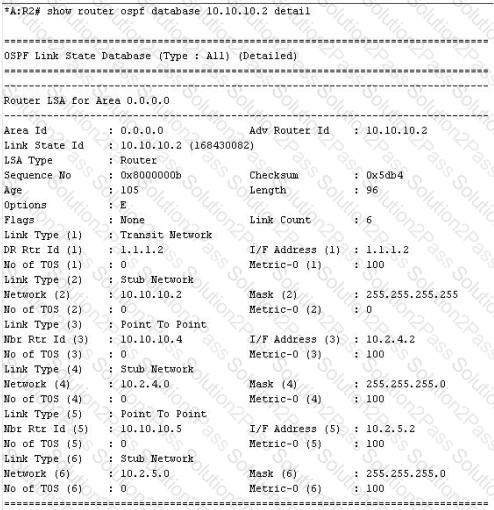
Given the contents of the Router LSA, which of the following best describes the local topology of the router?
Click on the exhibit button below.
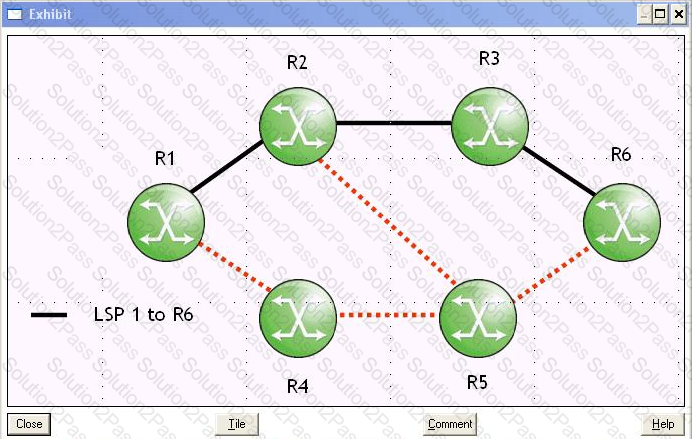
LSP 1's link between routers R3 and R6 has failed, and the RESV state at router R3 has timed out. Which of the following actions will router R3 initiate?
Which of the following statements concerning OSPFv3 is false?
Which of the following statements regarding admin groups is FALSE?
An interface has a MAC address of 24-16-4d-16-b5-3d. What link-local address will be assigned to this interface?
How have Traffic Engineering extensions to IS-IS been implemented?
Click on the exhibit.
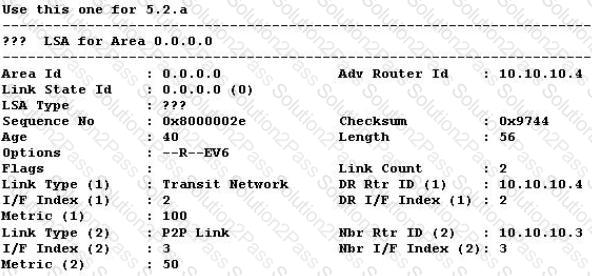
What type of OSPFv3 LSA is shown?
Click on the exhibit.
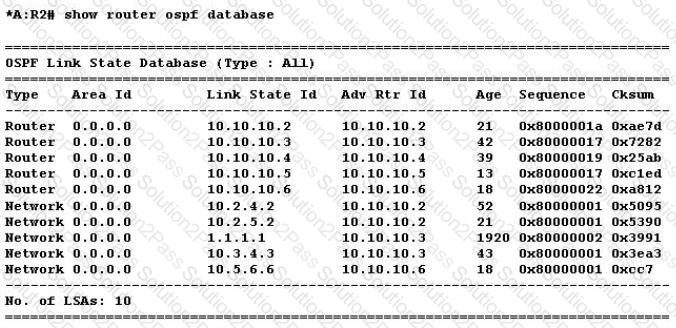
Given the output, which of the following is the most accurate statement about the network?
Click on the exhibit.
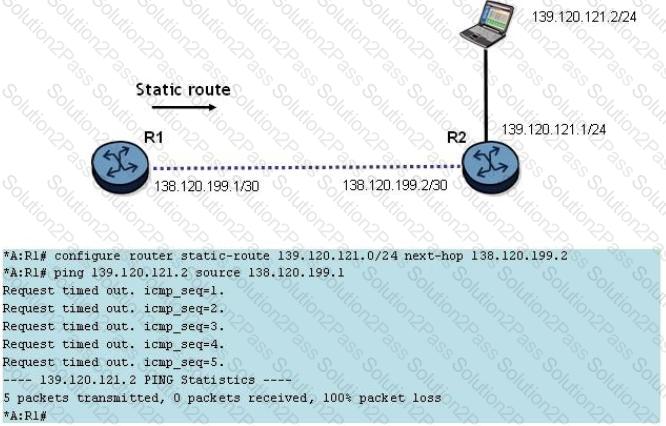
A static route has been configured on router R1 to reach the PC at 139.120.121.2. What else is required to make the ping succeed?
An OSPF adjacency is stuck in the exstart state. What is the most likely cause?
Click on the exhibit.
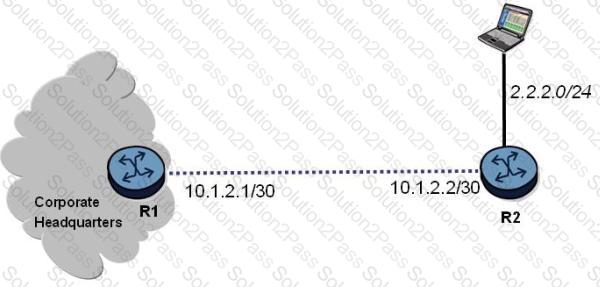
What is the correct command to configure a default route on the Alcatel-Lucent 7750SR R2?
Router R3 signals an LSP, reserving 1Gbps bandwidth on a 10Gbps link. RSVP configuration limits reservable bandwidth to 20 percent on the egress interface. Which of the following statements is true?
Which of the following statements are true? Choose two answers
Which is the OSPFv3 equivalent to the OSPFv2 Type 7 LSA?
Click on the exhibit.
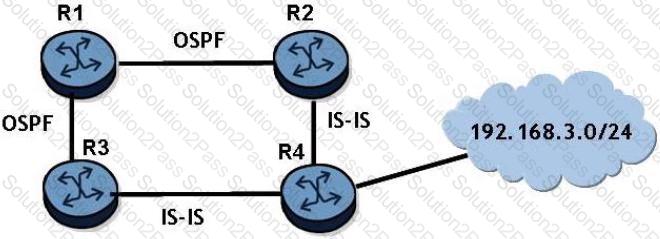
If router R2 re-distributes the IS-IS route 192.168.3.0/24 into OSPF, router R3 will receive two routes to 192.168.3.0/24 Assume that all IS-IS routers are L1/L2 capable and are in the same area.
What will be the preference of the two routes?
Which of the following statements best describes downstream unsolicited label distribution?
Click on the exhibit.
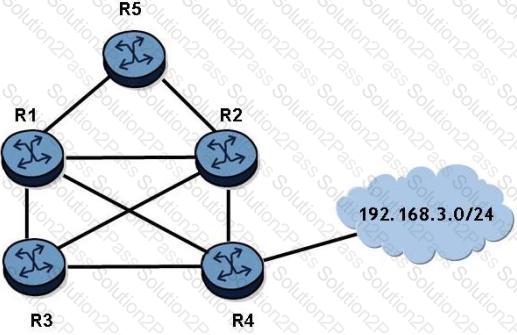
OSPF is operational on all links in the network diagram, all links have the same cost and all routers are configured with an ECMP value of 4. Router R4 advertises the prefix 192.168.3.0/24 into OSPF.
How many entries for prefix 192.168.3.0/24 will be l n router R1's routing table?
How many bits of the MPLS header are used for the label field?
Which of the following are top level TLV types defined for OSPF-TE? Choose two answers.
An OSPF router receives an update in which the sequence number, age, and checksum are the same as the entry already in the topological database. What action does the router take?
If routers R1 and R2 have a Level 1 and Level 2 IS-IS adjacency, which of the following statements are true? Choose two answers.
Click the exhibit button.
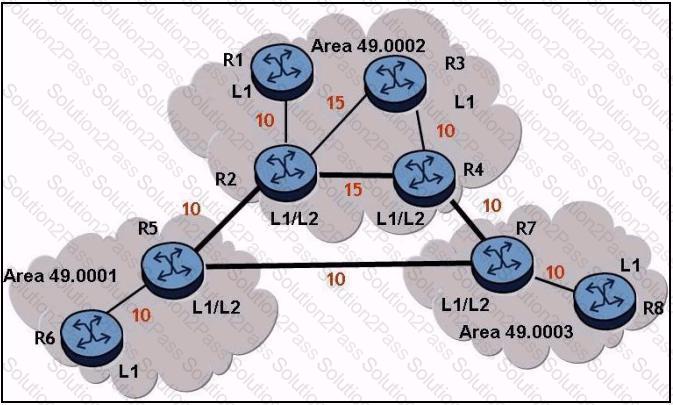
Given the diagram below, what path will traffic follow from router R6 to router R3, and from router R3 to router R6, if IS-IS is the routing protocol? The numbers beside the links are the metrics for that link.
How many bytes make up the system ID in an IS-IS NSAP address on the Alcatel-Lucent 7750 SR?
What command allows analysis of the Dijkstra calculation on the Alcatel-Lucent 7750 SR?
Refer to the exhibit.

Assume that OSPFv3 is properly configured on all routers and that R4 advertises its system prefix into Area 0. Which of the following statements best describes how R5 learns R4's IPv6 system prefix?
The Alcatel-Lucent 7750 SR supports which two of the OSPF area types below?
What causes an adjacency to change from down to two ways?
What is the default preference value for a static route in the Alcatel-Lucent 7750 SR?
A router is configured with the command "configure router ecmp 4". There are two best paths to a given destination with an equal cost in the IGP. Which of the following best describes the handling of traffic to this destination?
What is the default preference value for a static route in the Alcatel-Lucent 7750 SR router?
Which of the following statements regarding distance vectors protocols are true?
(Choose two answers).
Which of the following statements regarding the election of the designated router (DR) by OSPF routers are true? (Choose two)
What is the primary purpose of classless interdomain routing (CIDR)?
What are the types of networks supported on an Alcatel-Lucent 7750 SR for OSPF? (Choose 2)
Which of the following statements regarding IS-IS LSPs is true?
Click the exhibit button.
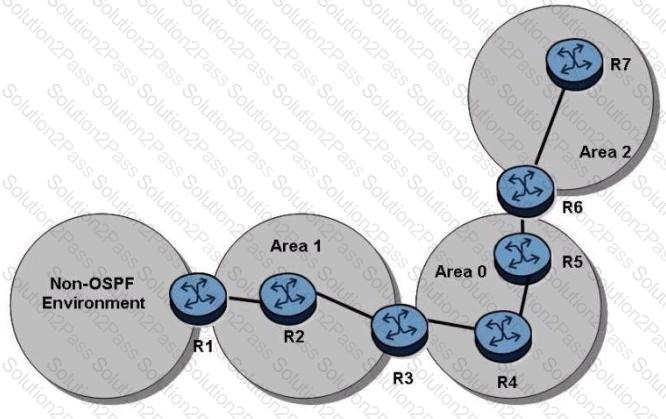
In the topology shown, router R1 is an ASBR configured to export external routes to OSPF. Assuming that there are no stub networks, which of the following statements regarding Type 4 LSA generation is true?
What types of routers can an IS-IS L1 router form adjacencies with? Pick all that apply.
